
We took the Great American Road Trip—in electric cars
A cross-country journey in electric cars reveals how alternative energy sources could help power us into a sustainable future.
On a weathered promenade at the edge of the Pacific, near the photo booths and the pretzel stand and a man molding busts of tourists out of clay, spins a Ferris wheel that draws electricity from the sun. A few hundred feet away, a sign marks the end of old Route 66. The Santa Monica Pier, where green energy meets automotive history, seemed like the perfect spot to kick off a cross-country road trip in electric cars.
Route 66, one of America’s first all-weather highways, began in Chicago. From the 1930s until it was rendered obsolete by interstates, it funneled millions of Midwestern migrants past motor lodges and trinket shops toward the sparkling shores of California. It helped reshape that state from a rural paradise to a series of sprawling cities. Along the way it came to symbolize so much: the transformational power of cars, the freedom of the open road, the magic of combining the two in a road trip. Today Americana-hungry travelers, after rolling through more than 2,200 miles of old 66, line up at a wooden hut on the Santa Monica Pier for signed certificates.
The pier is also a good place to reflect on the world we’ve created, in part through our love affair with the internal combustion engine. To the east lies Los Angeles with its seven million gas-guzzlers, which emit more carbon dioxide than a dozen states. To the south there’s Venice Beach, which in the 1940s was crowded with oil derricks—and where in recent years starving sea lions washed ashore, victims of ocean heat waves worsened by climate change. To the west and north lie Malibu and the hills above it, where the Woolsey fire raged in November 2018, after years of drought and rising temperatures. The blaze killed three people, forced a quarter million to evacuate, and destroyed 1,075 homes.
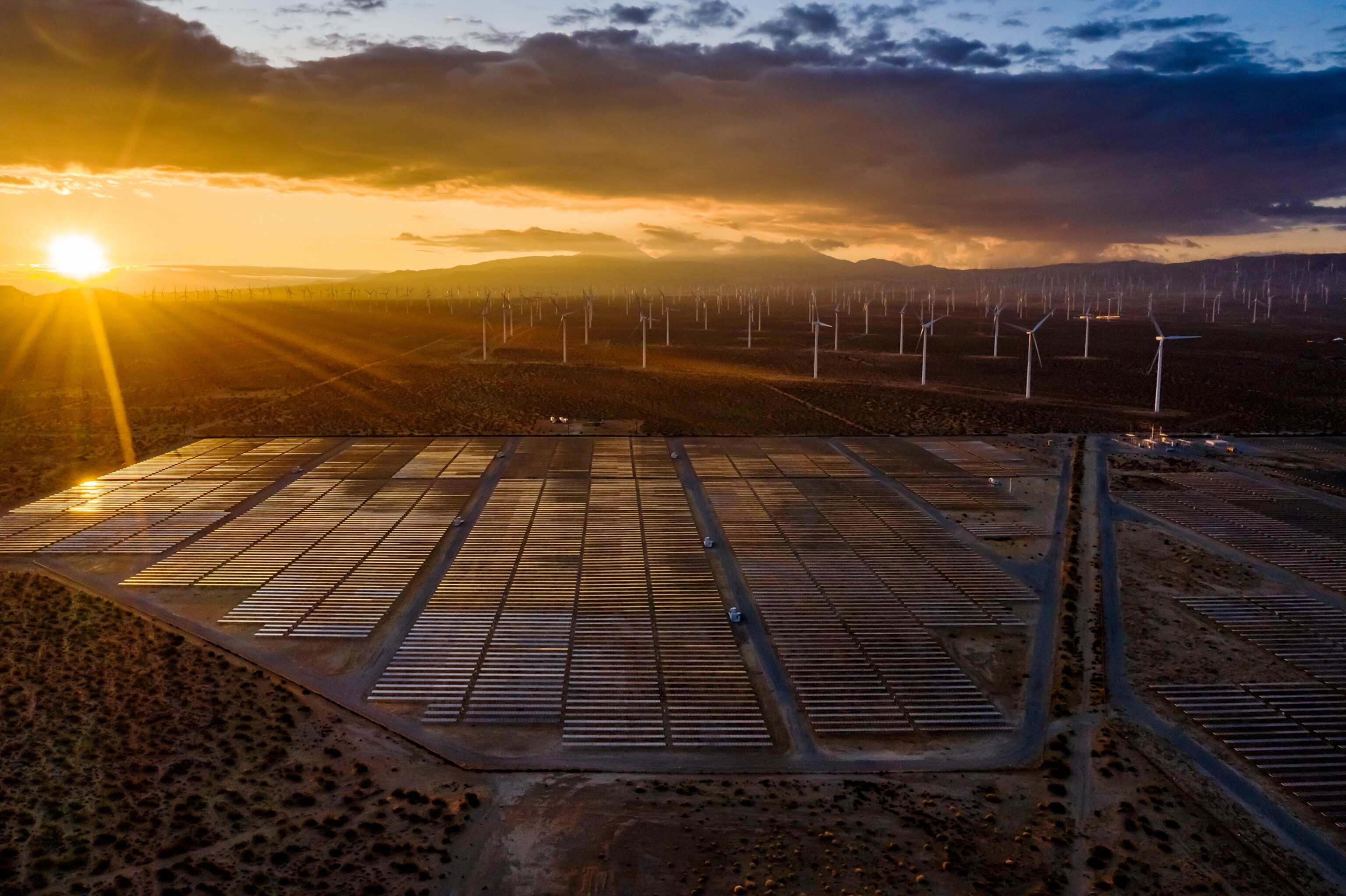
The Santa Ana winds “blew that fire incredibly fast, right down to the coast in a day,” Dean Kubani recalled on a hot day last fall, as we stood beneath the Ferris wheel. Kubani had recently retired as Santa Monica’s sustainability chief, after 25 years with the city; he had watched the Woolsey fire from the beach. “Normally fire season is September, October,” he said. But it lasts longer now “because we’re not getting the rain, and we’re not getting the cool weather.”
For anyone wondering what living in California, America, or the world will be like in 2070, this is a critical moment—and a confusing one. The United Nations Intergovernmental Panel on Climate Change says we must slash greenhouse gases to zero over the next half century, if not sooner, to forestall a climate disaster. Instead the world is producing more fossil fuel, not less. Oil and gas companies in the United States, already the top producer, plan to boost development 30 percent by 2030. President Donald Trump has moved to take the country out of the Paris climate accord, which aims to start weaning the world off fossil fuels.
Yet we also are undergoing a green energy revolution. Globally, renewable energy in the next five years is on track to increase by an amount equal to the electric power capacity of the United States. The fastest growing U.S. occupation in the next decade, according to the Bureau of Labor Statistics? Solar panel installer. (Number two: wind turbine service technician.)
Across the nation, cities and states are pledging to change. This year California began requiring solar panels on new homes. The city of Berkeley has banned natural gas in new buildings; Santa Monica and others are taking similar steps. Los Angeles wants to install 28,000 electric-vehicle charging stations in just eight years; Santa Monica is looking at 300 by 2021.
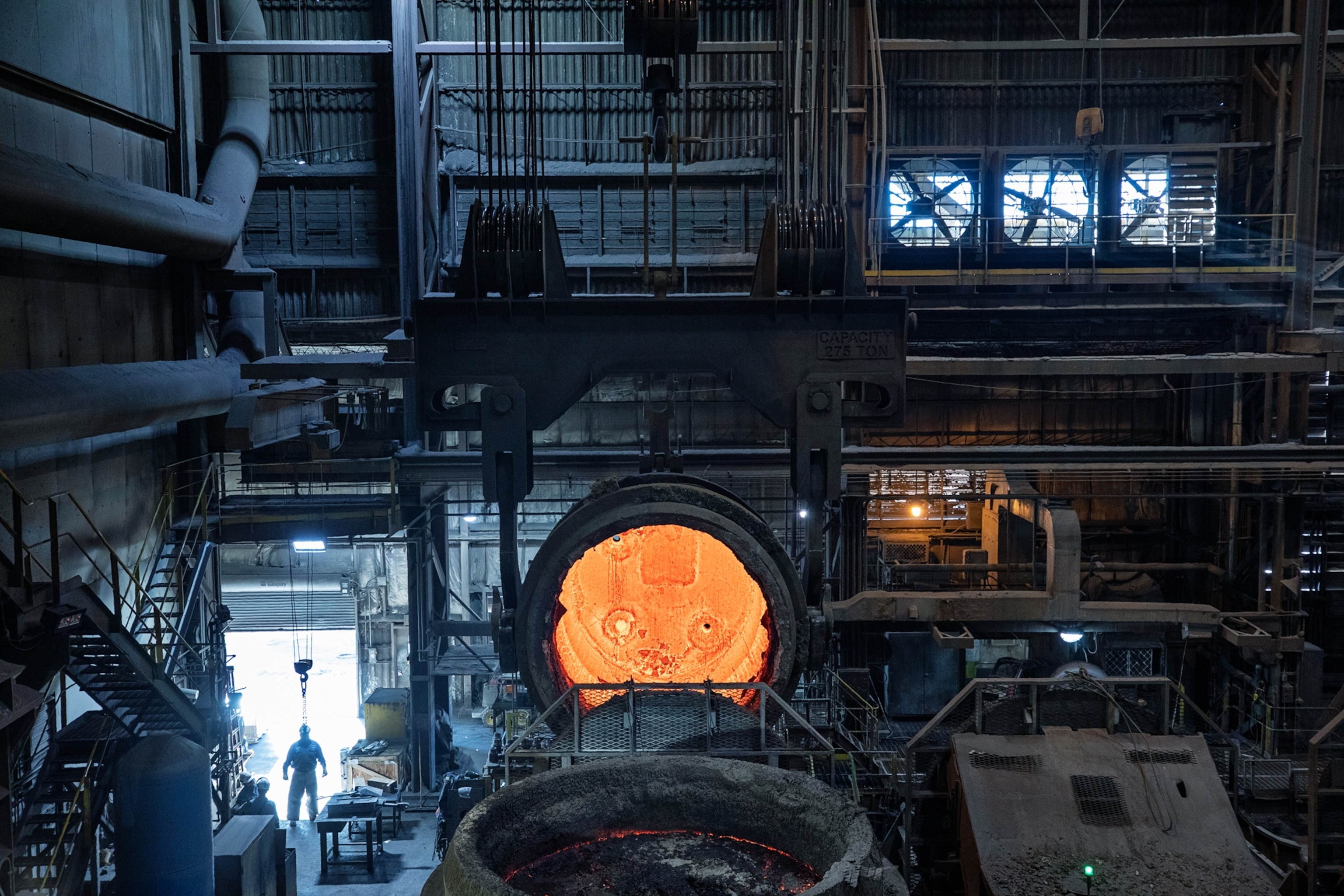
“When I first started here, the city had one electric car, and it was a converted Ford Taurus, I think, a station wagon,” Kubani said. It had solar panels on the roof. “You could drive it about 10 miles.” Photographer David Guttenfelder and I were planning to drive more than 4,000 miles in a series of electric cars. Loaded with bananas (for me) and beef jerky (for Guttenfelder), we left Santa Monica, bound for the East Coast, with one pressing question: Can we as a nation get where we need to go—meaning, can we get off fossil fuels fast enough to keep 2070 livable?
North of Los Angeles, in Kern County, petroleum is still pumped from large oil fields. But to the east, beyond the dusty Tehachapi Mountains from Bakersfield, the local oil capital, a cleaner future shimmers in the heat. We rolled into the desert town of Mojave in our rented Hyundai Kona and parked in a clothing store lot, where gusts of wind whipped the dresses around headless outdoor mannequins. Across rusty train tracks, we could see wind turbines towering over fields of solar panels, in what may be the country’s densest concentration of renewable energy.
Ben New, vice president of construction for 8minute Solar Energy (named for the amount of time it takes sunlight to reach the Earth), led us to a 500-acre cluster of solar modules that produce 60 megawatts of power, enough for 25,000 California homes. Wiry and silver-bearded, New spoke hurriedly, like someone used to racing the clock. “Twenty years ago, a solar panel was so expensive that nobody would have ever thought you could ever do anything like this,” he said.
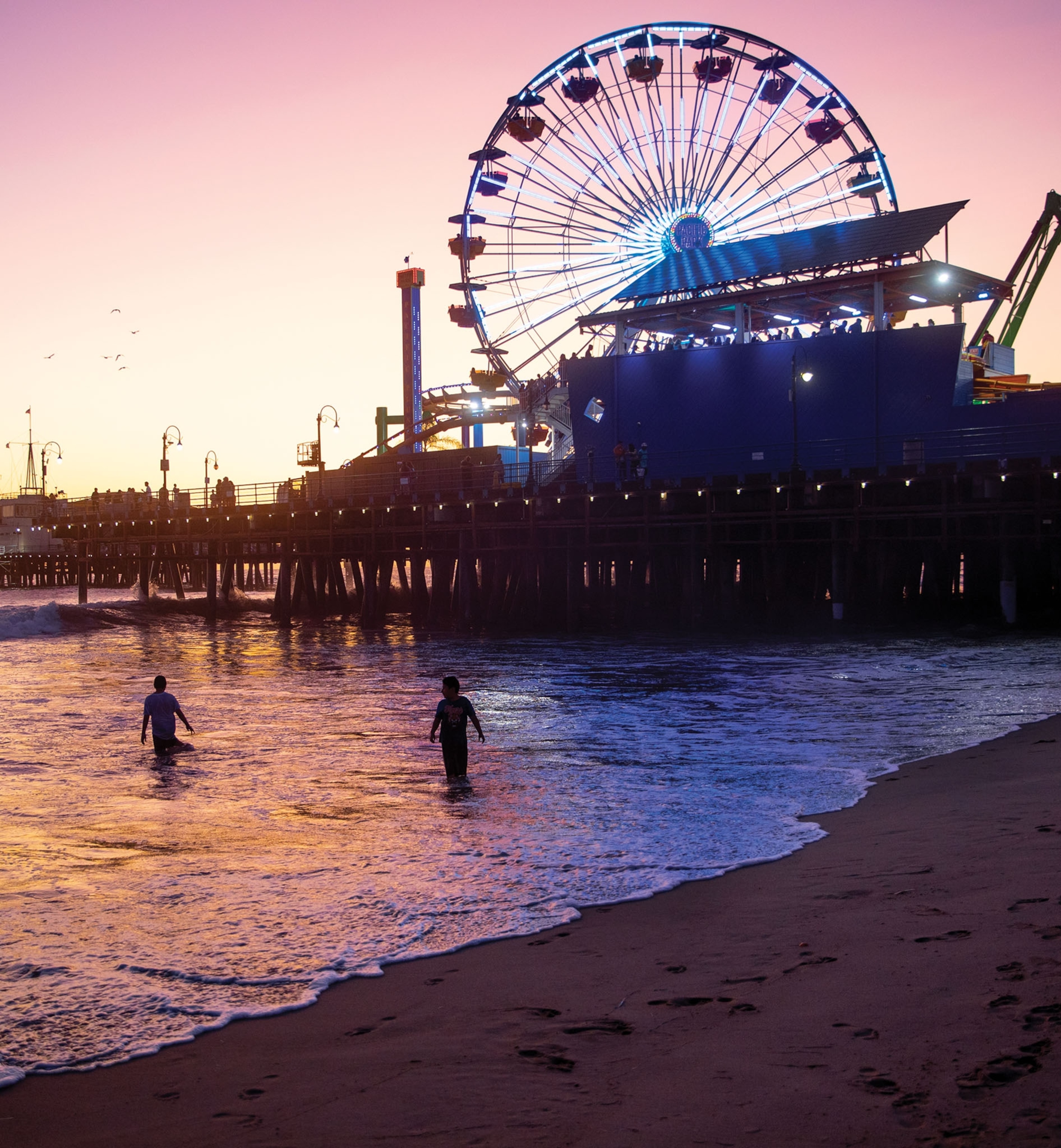
Today solar is a steal. The price of photovoltaic modules has plummeted 99 percent since the 1970s, thanks in large part to public policy and research—in Germany, Japan, China, and the United States. As governments pushed utilities to boost renewables, demand skyrocketed. Production got more efficient. Prices fell. Installing a watt of solar costs New a fifth of what it did 10 years ago and takes half as much space.
It took four decades, until 2016, for the U.S. to install a million solar-power systems, from home rooftops to utility-scale solar farms. It took only three years, until 2019, to install the second million. By 2023, the number is projected to double again. The U.S. now has enough solar power for 13 million homes. Projects are getting larger: New’s company has announced a deal for another 400 megawatts, with battery storage for 300. These and other 8minute projects will provide clean energy to one million Angelenos.
Impressive as these numbers are, however, they’re nowhere near enough. Today less than 2 percent of U.S. electricity comes from the sun, and another 7 percent or so from wind. The global numbers are comparable. To cap warming at 2.7 degrees Fahrenheit (1.5 degrees Celsius), a recent UN report estimated, global emissions must fall 7.6 percent annually for the next decade. Last year they rose again. Getting renewables to fill the gap, the report said, would require them to grow six times faster than they’ve been growing.
Can solar power spread fast enough? Experts have underestimated its potential before, and technology can bring rapid change.
That would mean massive mobilization and infrastructure investments—in steel and cable manufacturing capacity, in batteries and electric transmission lines. In the U.S., where the grid is split in three—one each for the East, the West, and Texas—it would require a major overhaul to ship power from sunny Arizona to coal-rich West Virginia. For now, New said, we’d have to produce many gigawatts “in areas of the country that have never done it before.” That would entail permitting challenges in places where fossil fuels are popular. Eager as New is for a swift transition to solar, he doesn’t see it happening in time. A 30 percent tax credit for solar investment, in effect since the George W. Bush administration, is to begin phasing out this year.
Could solar spread at the needed pace with the right encouragement? Experts have misjudged its potential before. In 2008 Harvard professor David Keith predicted we’d be lucky to see 30-cents-a-watt solar by 2030. It will hit that price in 2020. “We were totally wrong,” Keith said recently. “Cheap solar is real. It is stunning.”
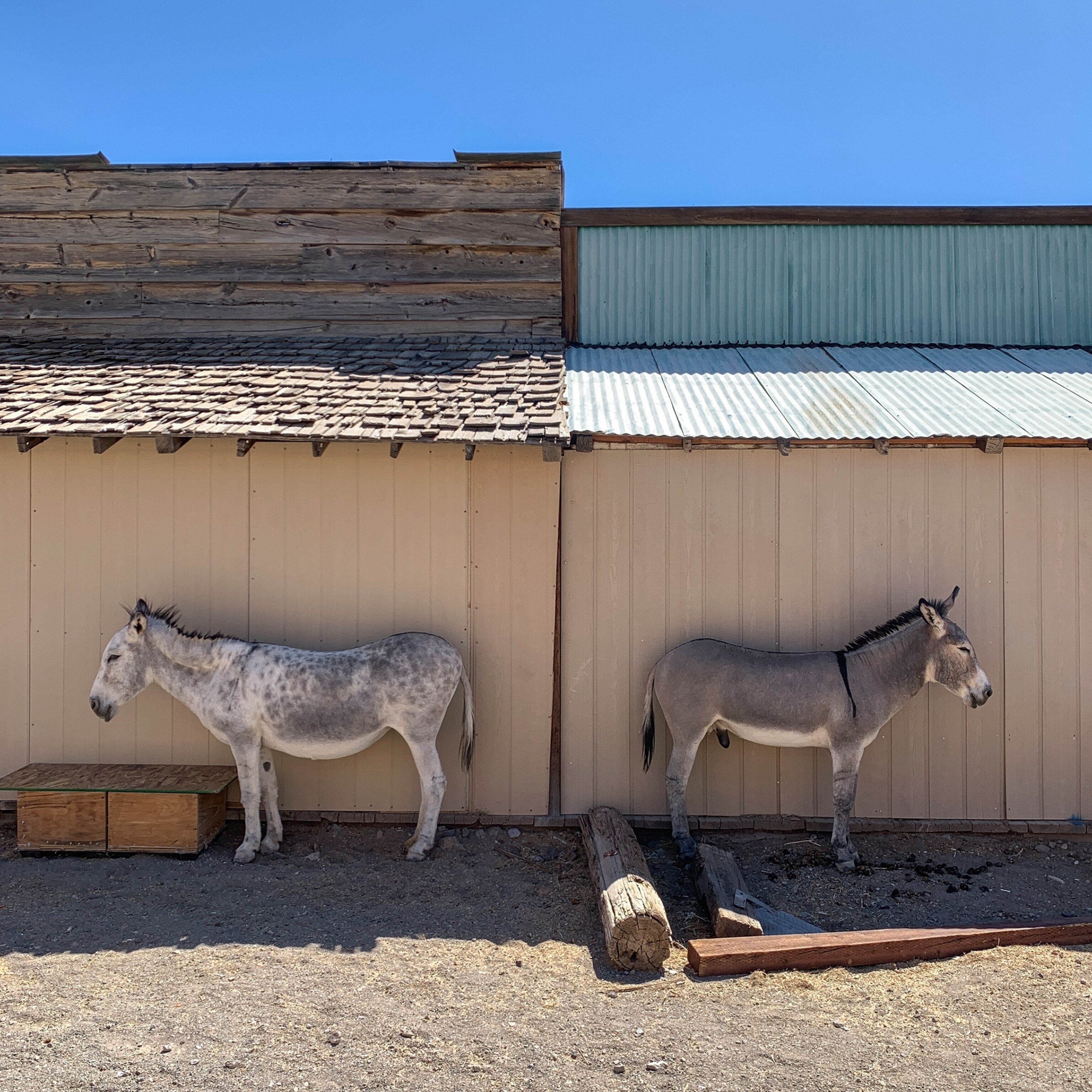
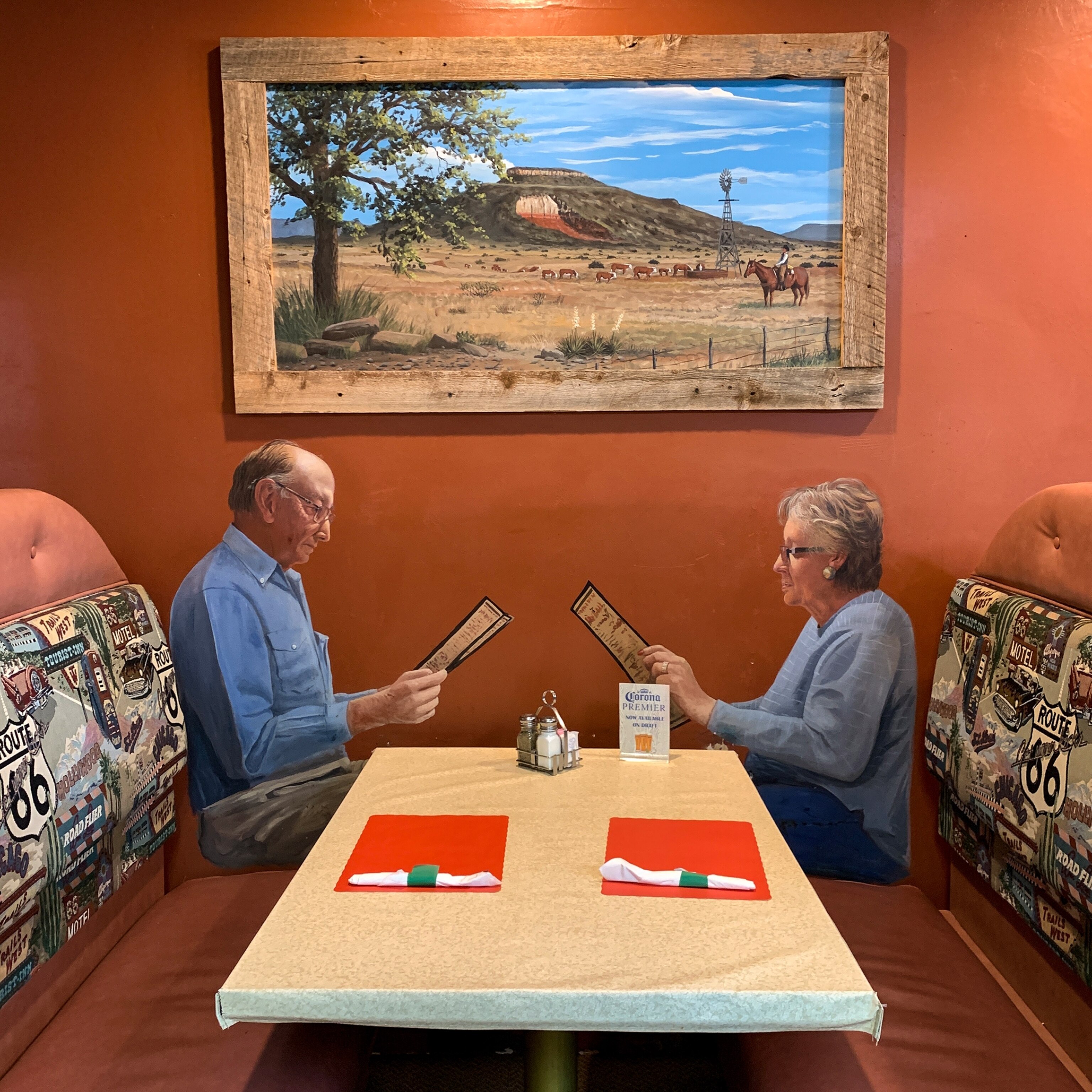
As we said goodbye to New, I thought about how quickly technological change can come to America, from the rise of smartphones and social media to the spread, in just the past few years, of plant-based meat substitutes to burger joints across this beef-eating land. Later that evening, Guttenfelder and I pulled into the Mojave Air and Space Port, a testing and launch facility not far from where Chuck Yeager first broke the sound barrier in 1947.
The spaceport attracted us because it had installed electric-vehicle charging stations. We plugged in our Kona, and a message appeared on the dash: Charging would take nearly six hours. Leaving the car for the night, we hiked, foreheads tucked in against the gritty breeze, almost a mile to the nearest motel.
The American road trip began with a bet. In 1903, before interstates and filling stations, a patron in a California private club wagered $50 that Horatio Jackson, a physician, couldn’t drive an automobile to the East Coast. Four days later, according to Horatio’s Drive: America’s First Road Trip, a 2003 film and book by Dayton Duncan and Ken Burns, Jackson and a mechanic bounced out of San Francisco in a 20-horsepower Winton touring carriage. They adopted a bulldog named Bud and fitted him with goggles to protect his eyes from dust. They roared up mountain passes on unpaved tracks, splashed through streams, broke down and got towed by horses, and waited for spare parts to arrive by train. Jackson hit New York 63 days later, completing the nation’s first cross-country car journey.
The road trip is now woven into the American psyche—as a vehicle for discovery; as a chance to remember, forget, move on, or get lost. Guttenfelder and I, both Midwesterners—he’s from Iowa, I’m from Kansas—had taken our own cross-country journeys as young men. Mine introduced me, at 21, to the craggy landscapes of the West: the Tetons, the Olympics, the Sierras, the Grand Canyon. It changed my life. Less than a year later I moved to Wyoming. I’ve lived less than an hour’s drive from mountains ever since.
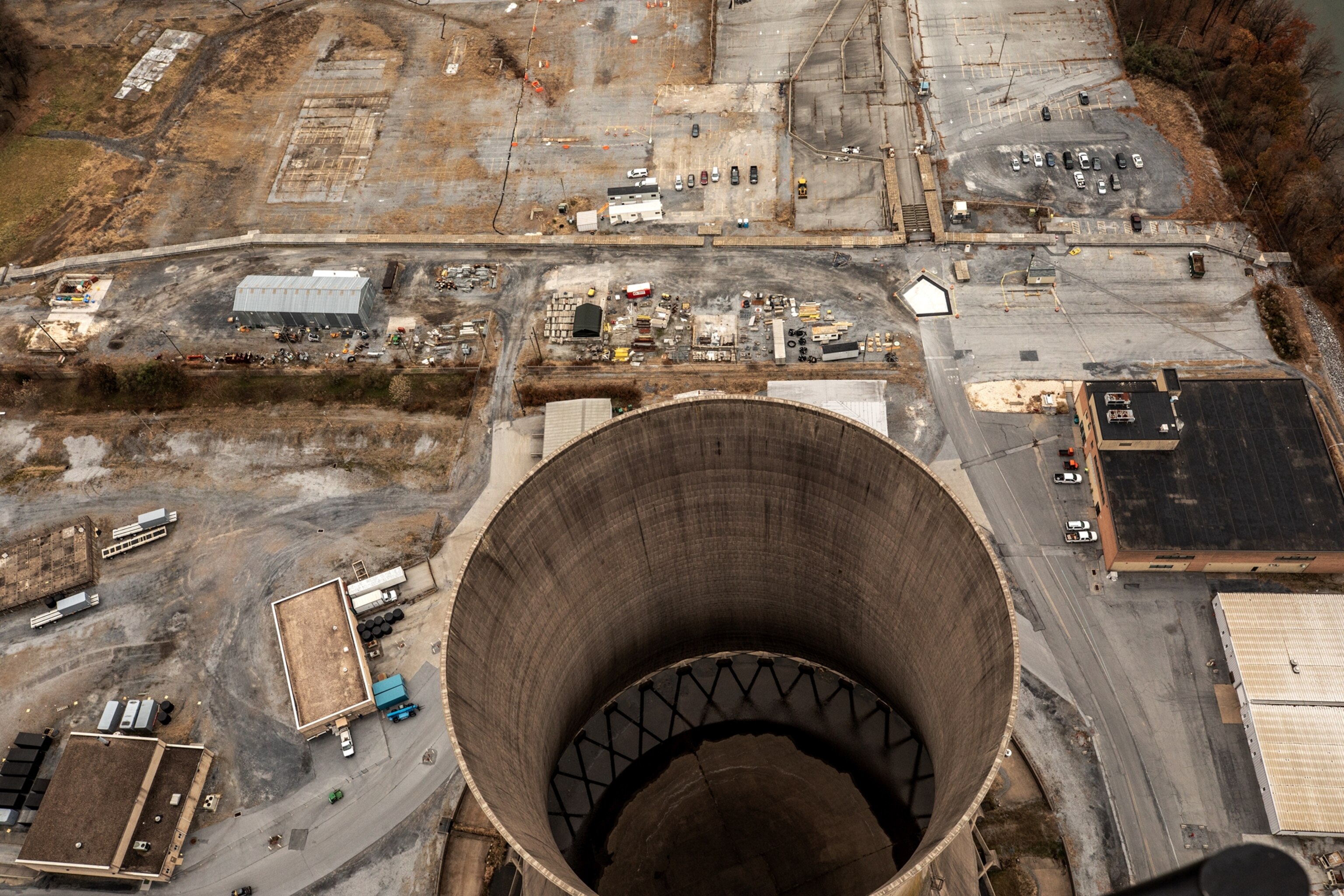
For now, cross-country travel by electric car requires retooling expectations. Fully charging can take an hour—or up to 24, depending on the battery and the charger. With the exception of Tesla’s more than 750 proprietary supercharging locations, there are few places in the U.S. to juice up quickly, whereas there are close to 150,000 gas stations. But most electric vehicles can charge at night, at home. And Tesla, with the country’s most robust fast-charging network, also has around 3,800 slower charging stations.
After Mojave, we blew past salt flats and glided into the narrow Panamint Valley. Under ideal conditions, our Kona could travel about 260 miles on a charge. But we were chugging up mountain passes and cranking the air-conditioning against hot winds that rattled the doors. I’d read that each could undercut battery life, which sparked our first of several bouts of “range anxiety.” It ended uneventfully in Death Valley, where we found a lavish lodge with a charger.
The next day we topped off in the lot at the World’s Tallest Thermometer, a towering pillar commemorating the global temperature record: 134 degrees Fahrenheit, set in 1913. Killing time in the gift shop among the T-shirts and ball caps, I thought back to the hut on the Santa Monica Pier where road trippers got their Route 66 memorabilia. Ian Bowen, the manager, told me he had grown up “the bored kid in the back seat,” as his family blitzed across Nebraska and Iowa on vacations, whizzing past roadside temptations. “I never understood as a kid why we would drive if we weren’t going to take our time,” Bowen said. To him, road trips are for slowing down and exploring. For now, extended stints at charging stations “really fit into that.”
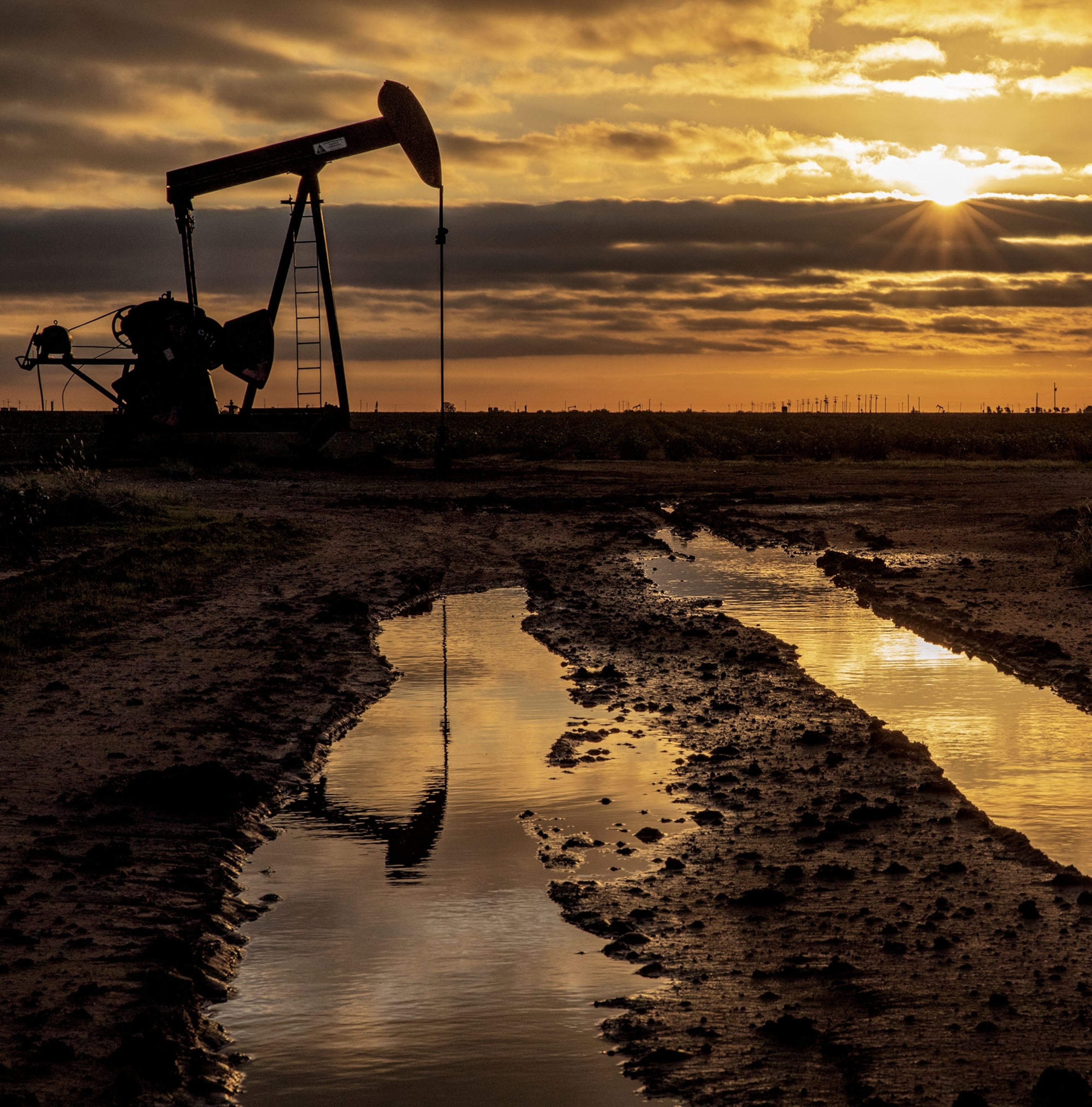
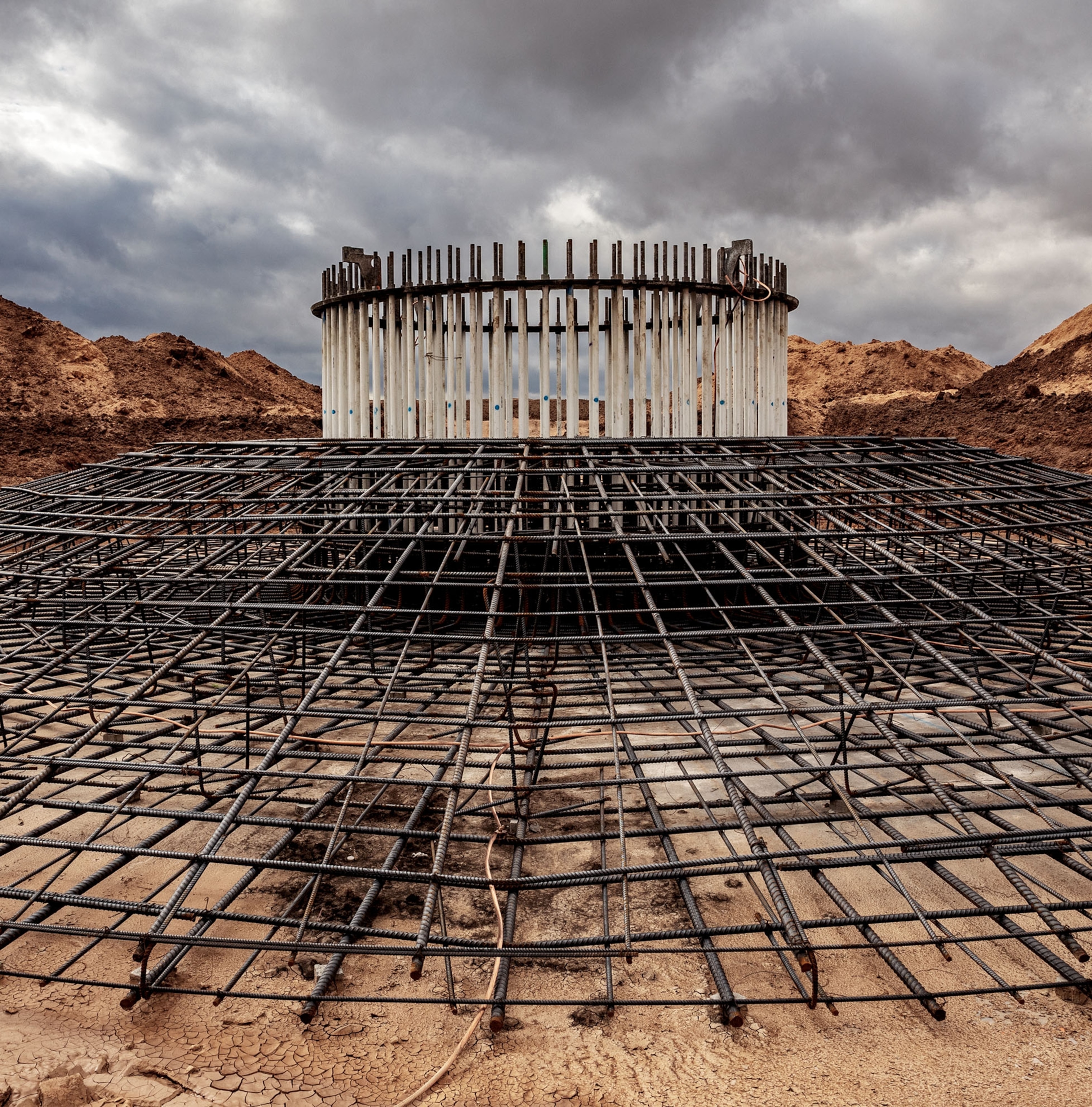
Pushing cars and trucks onto the grid is a central part of the strategy for getting America and the world off fossil fuels. In the coming decades it will dramatically increase demand for electricity. Once, the market would have responded with more coal-fired power plants, but no more. The new 8minute project, for example, will deliver energy to Los Angeles for less than two cents a kilowatt-hour—much cheaper than coal.
We came upon Russell Benally one evening as he was checking on his horse on a rocky overlook outside LeChee, Arizona, a small Navajo community near Lake Powell. In the distance, silhouetted by a dying sun, was the Navajo Generating Station. With its trio of columnar stacks, the largest coal plant west of the Mississippi resembled a beached riverboat.
This 45-year-old plant, which had produced enough electricity annually to supply two million homes—Los Angeles got some of its power from here until 2016—was shutting down because it could no longer compete with cheap gas and renewables. The closure would eliminate hundreds of jobs, almost all held by Native Americans. And while the Navajo and Hopi tribes didn’t own the plant, they received millions in royalties and lease payments, money that will be hard to replace. But the plant had been a big polluter, generating 14 million metric tons or more of CO2 a year. Galling to some in the Navajo Nation: That bad air came from energy that mostly went elsewhere. “A lot of people here still don’t even have electricity,” said Benally, a retired Navajo plumber.
We followed him home to meet his wife, Sharon Yazzie. She grew up in LeChee and remembers life without the station. She said she won’t miss it at all. “It’s always provided for the outside rather than for ourselves,” she said.
The coal plant closure is part of a trend that seems unstoppable. More than 500 U.S. coal-fired plants have closed since 2010, and dozens more closures are expected. U.S. coal consumption in 2019 was the lowest it has been in 40 years; in April, renewables generated more electricity than coal for the first time. China and India are still adding coal plants, but there are hints of a shift there too. Many Chinese plants now run only sporadically; India in 2018 added more renewable energy than coal.
A few miles from LeChee, in Page, Arizona, we parked our new rental, a white Tesla Model S, at Horseshoe Bend, a majestic meander in the Colorado River. Hundreds of visitors swarmed an overlook. The coal plant closure was a blow, Judy Franz, director of the Page Chamber of Commerce, told us, but tourism is up. More Navajo families were starting guide services and restaurants.
“There was a little bit of fear at first for a lot of people,” Franz said. But “we’ll be fine.”
In 2007 a tornado wiped out Greensburg, Kansas. The rebuilt town runs on renewable energy—a return to the self-reliance of prairie pioneers.
Over the next several days we drove a giant S curve through the future and the past as they coexist in uneasy tension. Crossing into southern Utah, we glided past sparse forests and mounds of white stone. We worked through the remote terraced earth of Grand Staircase–Escalante National Monument, the last region in the lower 48 states to be mapped. After a lengthy stop at a slow charger in Boulder, Utah—population 240—we pushed toward Colorado.
At the National Renewable Energy Laboratory (NREL) outside Denver, a driverless electric minibus recently had begun shuttling scientists from the parking garage to their offices. Guttenfelder and I watched one of them, David Moore, in lab coat and gloves, slather liquid with a paintbrush onto a credit card–size conductive glass square, transforming it instantly into a tiny solar cell. The liquid contained dissolved perovskites, a kind of semiconducting crystal that is unusually efficient at harvesting sunlight. Some believe perovskites could prove as transformational as the iPhone, making solar power ubiquitous and dirt cheap.
“There is no reason that I can’t deposit all of those materials on the side of a brick wall, on the side of a wood wall, on a south-facing wall … anything the sunlight hits,” Moore said. “The top of a car. Wearable clothing. Wearable backpacks.” He envisions solar cells printed on rolls of thin film, like newspapers on presses, making them easy to mass-produce quickly. Industry insiders are intrigued but skeptical. Breakthroughs often fail outside the lab.
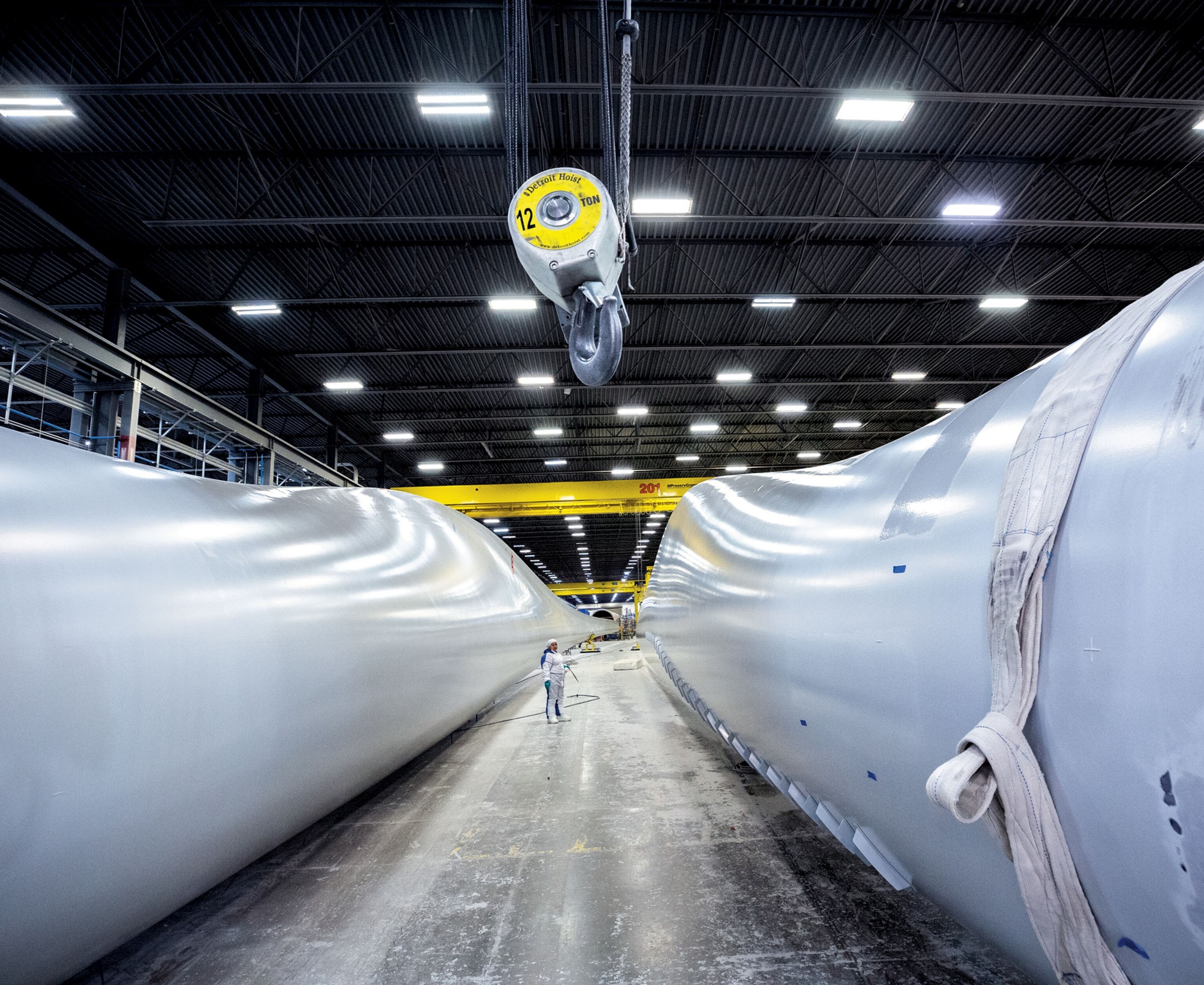
Many will arrive between now and 2070—the bigger question is how fast the vested interests will let old technologies die. In Texas we confronted that dynamic.
One muddy morning southeast of Lubbock we watched a flatbed truck haul a wind turbine part across cotton farms. It, like us, had just crossed the Texas plains to reach Sage Draw, a 41,000-acre wind project under construction. We donned hard hats and stomped around an earthen pit where a latticework of rebar would soon brace a wind tower, one of 120 that together will generate 338 megawatts.
Texas, so synonymous with oil that the state flower could be a bobbing pump jack (it’s actually the bluebonnet), now generates more wind energy than all but four countries. The legislature ordered utilities to spend billions upgrading the state’s electric grid, stringing thousands of miles of new transmission lines so that wind projects in gusty West Texas could sell power to eastern cities such as Dallas. It worked spectacularly. By 2017, the Lone Star State was producing a quarter of the nation’s wind electricity.
At the same time, though, the Permian Basin in West Texas and New Mexico was becoming one of the world’s largest oil plays, thanks to advances in hydraulic fracturing, or fracking. Texas now produces more than twice what Alaska did at its peak, in 1988. Just the excess natural gas that companies burn or vent, for lack of pipelines to sell it, tops 800 million cubic feet a day, according to Rystad Energy—enough to cover consumption in the entire state of Washington, where I live. Flaring gas releases CO2; the vented natural gas is mostly methane, which warms the planet even more powerfully.
At Sage Draw, the Texas wind and oil booms meet. ExxonMobil plans to increase its oil development in the Permian by 80 percent in four years. To help power its operations, it has agreed to buy most of the renewable electricity produced at Sage Draw and a nearby solar farm, both of which are owned by Denmark-based Ørsted. Frank Sullivan, head of strategy at Ørsted’s American onshore business, called the agreement “a powerful indicator” of clean energy’s new competitiveness. It’s also an indicator of our strange moment. In Texas, clean energy is helping to extract more fossil fuels—when it needs to replace them altogether.
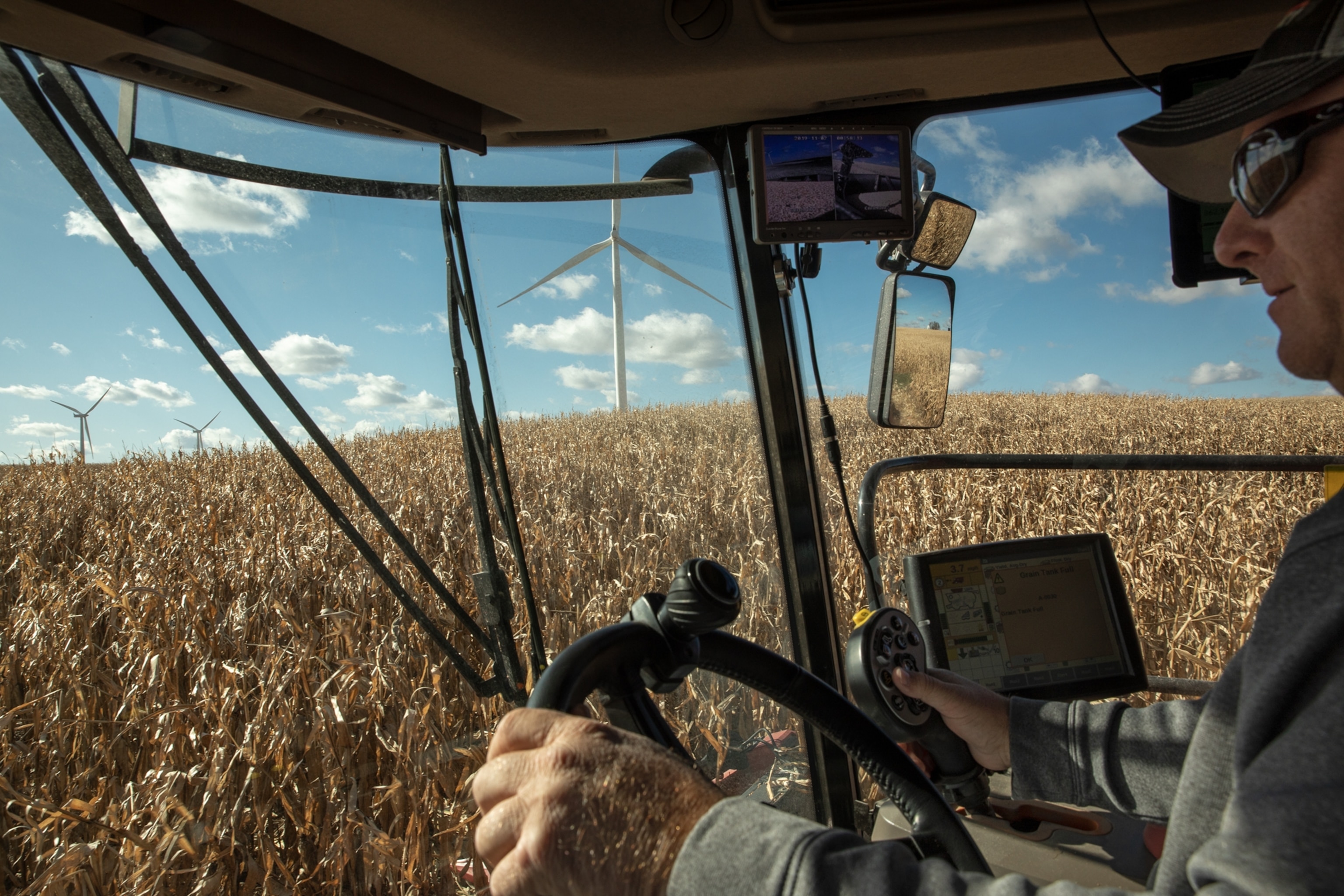
Of course, most of us still buy what ExxonMobil sells. And crossing this divided nation makes clear that some Americans aren’t eager for change. In Tucumcari, New Mexico, near the lovingly maintained Blue Swallow Motel, drivers can find a small EV charging hub at an old Conoco filling station. The day we arrived, someone had blocked it with a Ford F-250 pickup.
In Kansas a truck carrying a giant wind turbine blade failed to negotiate a corner, blocking traffic. As vehicles backed up, a pickup peeled out and turned around, belching black smoke. The frustrated driver was “rolling coal.” He’d modified his diesel engine to spew extra exhaust at the flip of a switch—an anti-environmentalist protest also known as Prius dusting.
Yet attitudes are changing; Americans embrace the energy transition when it works for them. Wandering through the amusement park glare of Las Vegas, with its illuminated fountains and floodlights sweeping the sky, I gawked at the energy profligacy. But a new law requires that half the state’s electricity come from renewables by 2030. Next door in equally sunny Arizona, a utility spent $38 million in 2018 defeating a ballot initiative with similar aims. This year, though, it changed course, announcing a goal of going 100 percent renewable by 2050.
In Colorado we met software engineer Kevin Li as he charged his 2018 Tesla Model 3. He’d just picked it up in California and was driving home to North Carolina. When I asked what role climate change played in his going electric, Li looked confused. I repeated the question: Did he buy a Tesla out of a deep-seated concern for global warming?
“Nope,” Li said.
Then why?
“Speed,” Li said, smiling. “It’s fast—really fast.”
In western Kansas we spent a day in Greensburg, population 790. In 2007 a tornado wiped out more than 90 percent of this farm town, killing 11. When it came to rebuilding, some suggested Greensburg become sustainable—a “green burg.” That sounded rather hippie to Bob Dixson. “All I could think about was 1968, powder blue bell-bottom pants, tie-dyed shirt, big white belt buckle, hair down to here, maybe on mind-altering chemicals, hugging a tree,” the onetime mayor has said.
But, Dixson told me, he came to see it as a return to the virtues of his prairie-settling ancestors. Kansas pioneers built windmills to power wells, lived in sod houses—early green-roofed buildings—and stored food in root cellars. Greensburg’s new school uses solar and geothermal heating, and the rebuilt community generates electricity from wind. Greensburg’s grid is now 100 percent carbon free.
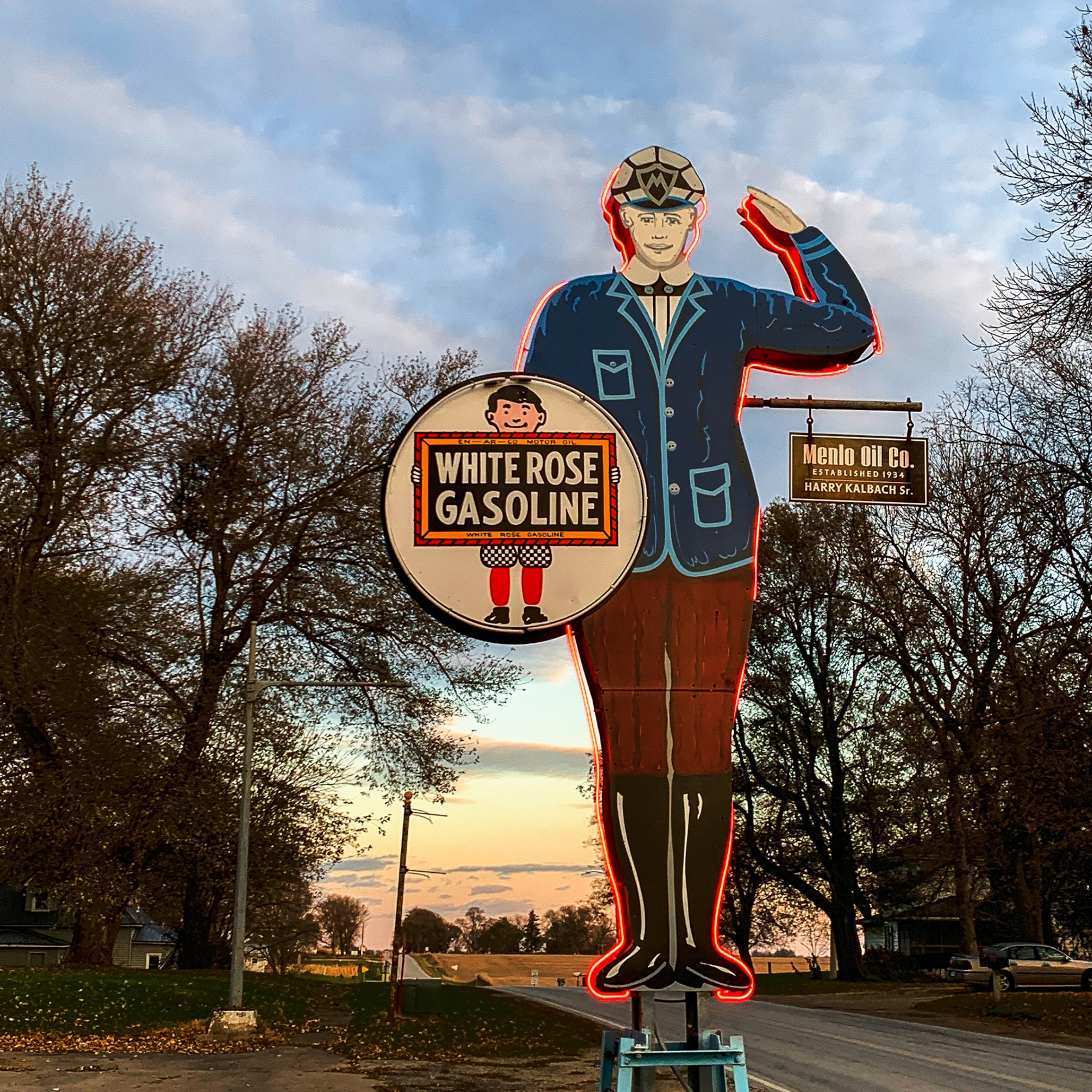
One night in Des Moines, Iowa, as I settled into a hotel room, Guttenfelder texted from across the hall. An unexpected visitor would be speaking two hours away the next day: Swedish teenage climate activist Greta Thunberg. She was crossing the country in a Tesla too, but in the other direction.
We pulled into Iowa City as thousands were gathering. I saw a hand-drawn picture of the planet captioned “Help Me I’m Dying.” Thunberg joined local students on stage. “Right now the world leaders keep acting like children, and somebody needs to be the adult in the room,” she said. The crowd roared.
Thunberg had sailed to the U.S. instead of taking a plane; one flight can produce more CO2 than some people produce in a year. With climate stakes rising and air travel increasingly popular, some Europeans and Americans, including scientists, have curtailed jet travel. Guttenfelder and I talked about how deeply fossil fuels permeate our lives.
Earlier in our trip, I’d even flown home for my daughter’s 11th birthday. I felt guilt at contributing to a slightly less livable world for her. I felt frustration at being forced to choose between her present and future. But the goal has to be to build a world where people can travel without carbon guilt. At NREL, teams are researching jet fuels made from algae or food waste. In December the first electric commercial airplane, a six-passenger seaplane, made a successful test flight in Canada.
Across Iowa wind turbines turned in the corn; tax credits have made them valuable income sources for farmers. Iowa is now second, after Kansas, in the portion of electricity it gets from renewables. In Newton, population 15,000, turbine towers are made in a former Maytag washing machine factory. In Montpelier, SSAB, a Swedish steel company, forges turbine parts. The massive heat comes not from coking coal, as in most steel mills, but from electric arc furnaces. In two years the furnaces will be powered entirely by clean energy, Chuck Schmitt of SSAB Americas told me. A steel mill in the heartland using wind to make wind turbine parts: It felt to us like a milestone.
As a student at the Massachusetts Institute of Technology, Robert “RJ” Scaringe strung clotheslines in his apartment and did other “time-consuming and challenging” things to minimize his carbon footprint. Urging people to forfeit modern conveniences, he determined, wasn’t a winning strategy. “It’s too hard,” he told us. Today Scaringe runs electric vehicle start-up Rivian, which plans to release a sport utility vehicle and a pickup this year. It also has a deal with retail giant Amazon to build 100,000 electric delivery trucks by 2030.
What’s true of renewables is also true of electric vehicles: Things are changing fast, just not yet fast enough. Globally, there are five million electric cars, an increase of nearly two million in one year. Volkswagen alone plans to build 26 million more in 10 years. But that’s in a world of roughly 1.5 billion cars and trucks. EVs are just 2 percent of the U.S. market.
Tesla isn’t the only company trying to make EVs cooler. Ford has unveiled an electric Mustang, Harley-Davidson an electric motorcycle. But worldwide, drivers are favoring heavy, more polluting SUVs; there are now more than 200 million on the road, six times as many as in 2010. Scaringe is aiming for that market.
At Rivian’s Plymouth, Michigan, engineering and design plant, we watched workers zip about on skateboards. Scaringe, 37, is focused on vehicles for active, outdoor lifestyles. He plans, with partners, to build high-speed charging stations in less traveled places, near the “edge of the trail.” Much as teenagers can’t imagine life before social media, Scaringe expects his own children—all under age five—will never know a world “where charging wasn’t ubiquitous.”
Over the next few days Guttenfelder and I raced toward our destination: Washington, D.C. We stopped in Ohio to tour First Solar, the biggest U.S. manufacturer of solar panels. In Pennsylvania we drove past the Three Mile Island nuclear plant. Forty years after the notorious accident that shut down its first reactor, the other one had just closed as well, because it is too expensive to run today. Seven other American nukes have shut down since 2013; seven more plan to by 2025. Much of their carbon-free electricity will be replaced by emissions-rich natural gas. The debate about the future of nuclear is complex and increasingly ideological.
So is the debate around climate change. “Unfortunately, for reasons that are hard to understand, sustainability has become a very political issue,” Scaringe had told me. Yet policy shifts at all levels of government are needed to speed our transition to clean energy. Can a polarized nation be brought together around solutions?
Days before starting our trip, I’d visited a man who’d run for president proposing to do just that. On an afternoon when CNN was hosting town halls on climate with Democratic candidates, I’d driven a Nissan Leaf south from my Seattle home to Olympia, the state capital, to meet Washington governor Jay Inslee. Inslee had mapped out plans for everything from a national renewable energy policy for utilities to a zero-carbon building standard. But his presidential campaign never caught on, and he’d recently ended it.
Seemingly unbowed, he told me a story about the nation’s ability to move quickly when the will is there. In 1940 the U.S. Army asked automakers to design a brand-new “light reconnaissance” vehicle. By the end of World War II, five years later, workers had built nearly 645,000 Jeeps.
“We are in a movie where we have not seen the final reel,” Inslee said. “And we have the capability of having this be a happy ending.”
A month after leaving Santa Monica, Guttenfelder and I arrived in Washington. Ducking into the National Museum of American History, I spotted Horatio Jackson’s red Winton carriage—complete with a replica of Bud the bulldog in goggles. The exhibit, about American road trips, also highlighted an arduous 1919 cross-country convoy of military vehicles that had included a young lieutenant colonel, Dwight Eisenhower. Later, as president, Eisenhower would champion the interstate highway system.
A display nearby traced the history of how highways became necessary. Within a quarter century of Jackson’s journey, cars had become a fixture of American life. Twenty-three million roamed the U.S. by 1930, as Route 66 was being paved. More than half of American families owned one, maybe even some who’d initially dismissed them as “devil wagons.”
Americans adapt quickly, once convinced that change is necessary, even useful. It could happen again. By 2070, clouds of “rolling coal” might be barely remembered wisps on the wind.




